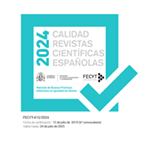Community based bioremediation: grassroots responses to urban soil contamination
Abstract
The past 150 years of industrial processes have left a legacy of toxicity in the soils of today’s urban environments. Exposure to soil based pollutants disproportionately affects low-income communities who are frequently located within formerly industrialized zones. Both gardeners, who come into direct contact with soil, as well as those who eat the products grown in the soil, are at risk to exposure from industrial contaminants. Options for low-income communities for remediating contaminated soils are limited, with most remediation work being carried out by costly engineering firms. Even more problematic is the overall lack of awareness and available information regarding safety and best practices with soils. In response to these challenges, a grassroots movement has emerged that seeks to empower urban residents with the tools and information necessary to address residual industrial toxicity in their ecosystems. Focusing on methods that are simple and affordable, this movement wishes to remove the barriers of cost and technical expertise that may be otherwise prohibitive. This paper will give an overview of this exemplar of generative justice, looking at case studies of organizations that have been successful in implementing these strategies.
Downloads
Publication Facts
Reviewer profiles N/A
Author statements
- Academic society
- N/A
- Publisher
- Grupo de Investigación Cultura Digital y Movimientos Sociales. Cibersomosaguas
Article download
License
In order to support the global exchange of knowledge, the journal Teknokultura is allowing unrestricted access to its content as from its publication in this electronic edition, and as such it is an open-access journal. The originals published in this journal are the property of the Complutense University of Madrid and any reproduction thereof in full or in part must cite the source. All content is distributed under a Creative Commons Attribution 4.0 use and distribution licence (CC BY 4.0). This circumstance must be expressly stated in these terms where necessary. You can view the summary and the complete legal text of the licence.













